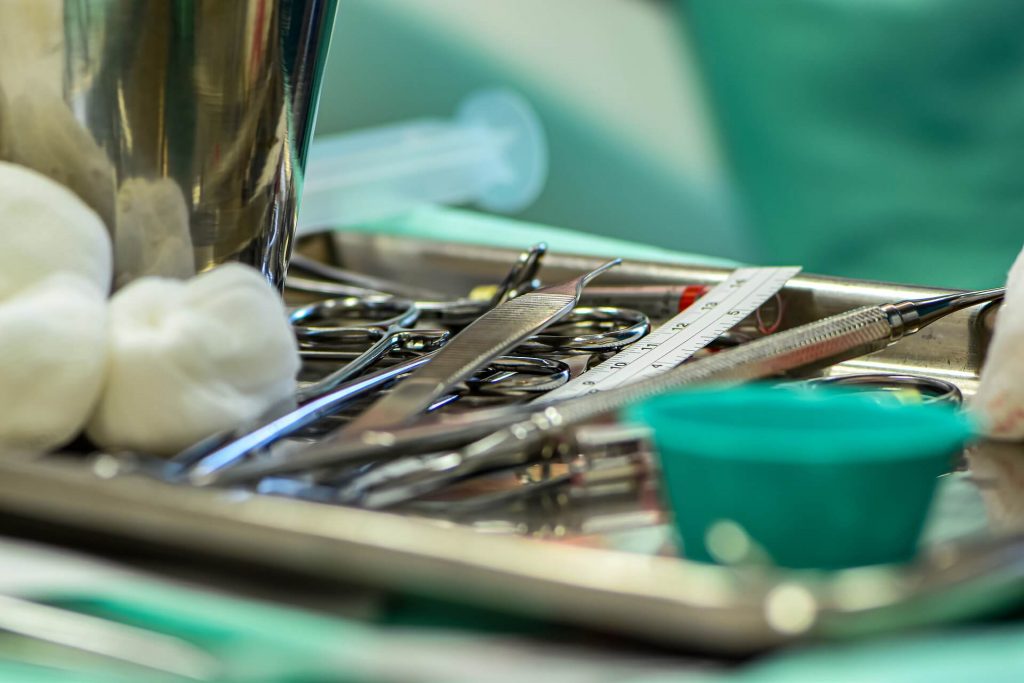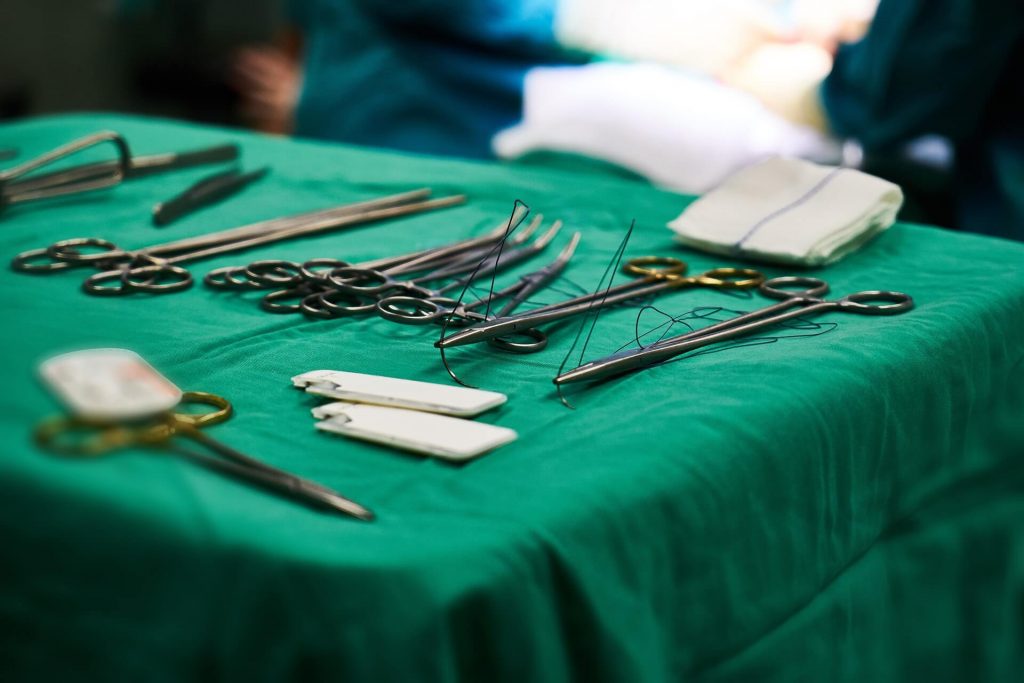If you or someone you know are living with degenerative disc disease and haven’t gotten relief from conservative treatment methods, surgery was probably the next recommendation. Degenerative disc disease surgery is generally how this condition is treated when methods like exercise, physical therapy, or medication fail to provide relief.
The problem is that surgery is rarely able to provide lasting relief from degenerative disc disease pain. In this article, we’re trying to find out why this is so commonly the case and if degenerative disc disease surgery can’t treat this condition, what can?
The Basics of Degenerative Disc Disease
Just about every adult’s spinal discs will degenerate with age. Of course, this doesn’t mean that every adult will suffer from degenerative disc disease at some point, but this is why it’s such a common condition.
Degenerative disc disease, which isn’t actually a disease, is a condition in which damaged or degenerated spinal discs cause pain. The specific symptoms of this condition are broad and wide-ranging, but it generally causes symptoms that range from mild to severe.
Now let’s look at the spinal disc itself and how degenerative disc disease develops, in order to understand why degenerative disc disease surgery is usually unsuccessful.
Spinal Discs
Your spinal discs are located between the vertebrae of your spine and are designed to act as shock absorbers against the stress placed on your spine and provide flexibility for your spine. The spinal disc is made up of two parts, the annulus fibrosus and nucleus pulposus.
The annulus fibrosus is the tough outer layer of the disc. It is made up of layers of collagen fibers and it contains many nerves, making tears in this area of the disc painful.
The nucleus pulposus is the inner portion of the spinal disc. It is made up of a gel-like substance and contains proteins that can irritate and inflame tissues and nerves that they come into contact with. If the proteins in the nucleus pulposus leak outside of the disc, it can cause many painful symptoms.
Further, unlike most parts of the body, your spinal discs don’t get a large amount of blood supplied to them. This is why it’s impossible for a spinal disc to heal itself once it’s been damaged or sustained an injury. This can also lead to a spiral of degeneration, eventually leading to debilitating pain.
What are Annular Tears?
There are a variety of factors that lead to disc degeneration. The most common of these factors is age. Over time, our spinal discs simply become more fragile and more prone to develop damage that can lead to degeneration.
More specific factors include disc desiccation or dehydration. This is also related to aging; as you get older and your spinal discs become damaged, they can become dehydrated and lose their ability to absorb shock and provide flexibility.
Being active is good for your overall health and your spine health, but it can also wear and tear in your spine. In fact, sports and other activities that involve repetitive bending forward or twisting can cause literal tears in the disc. This can lead to desiccation as well as many other issues.
Spine injuries can also lead to degenerative disc disease by causing damage to your spinal discs.
A factor that relates to all of these causes is usually the true cause of degenerative disc disease, and can’t be addressed by degenerative disc disease surgery is an annular tear. Annular tears, sometimes called annular fissures, are, as their name implies, a tear in one or more layers of the annulus fibrosus. These tears are sometimes asymptomatic, but they can also lead to severe pain.
Research has shown us that pain caused by annular tears occurs as a result of what we call Leaky Disc Syndrome™.

Leaky Disc Syndrome™
Because annular tears develop in the outer portion of the spinal disc, they can allow the nucleus pulposus to leak out from within the spinal disc. As we previously mentioned, the nucleus pulposus is made up of proteins that can cause irritation and inflammation in nerves and tissues that it comes into contact with. This is why degenerative disc disease can lead to so many painful symptoms and why symptoms can be felt all throughout your body. For example, if the nucleus pulposus irritates nerves in your cervical spine, you may feel pain, tingling, or numbness in your arms, hands, and fingers. This is what we refer to as Leaky Disc Syndrome™, and it’s exactly why degenerative disc disease surgery is so rarely successful.
However, Leaky Disc Syndrome™ doesn’t just cause pain throughout the body. This syndrome can also cause fatigue, depression, and limited function.
Why Degenerative Disc Disease Surgery Doesn’t Provide Relief
Before explaining why degenerative disc disease surgery is rarely able to provide patients with relief from back and neck pain, let’s look at the common surgical procedures used to treat degenerative disc disease.
Spinal fusion may be the most common surgical procedure recommended for this condition. This procedure is designed to permanently connect two or more vertebrae in order to eliminate motion and provide stability. Using techniques that mimic your body’s bone healing process, bone or bonelike material is placed in the space between your vertebrae. Metal plates, screws, rods, or cages may also be used to hold everything together until the operated area becomes one solid unit.
Artificial disc replacement is a surgical procedure in which damaged spinal disc material is removed and replaced with a synthetic or artificial disc. This procedure aims to relieve pain caused by spinal discs while allowing patients to have more range of motion than spinal fusion, but it’s not without its own issues.
In addition to the common risks associated with surgical procedures, degenerative disc disease surgery doesn’t work because it literally cannot address the cause of this condition. While both of these procedures can be successful in treating spine issues with a different cause, they will only lead to continued pain for anyone suffering from annular tears and Leaky Disc Syndrome™. This is why many patients require revisional surgery following their initial procedure. Unfortunately, this is a never-ending cycle when the procedure is incapable of treating the root of the problem.
Dr. Pauza’s Discseel® Procedure – More Effective Than Degenerative Disc Disease Surgery
Now that we know why degenerative disc disease surgery is so often unsuccessful and that surgery can’t treat annular tears, what is an effective degenerative disc disease treatment?
The best way to get relief from degenerative disc disease pain caused by annular tears is with the Discseel Procedure. This procedure is non-surgical and minimally invasive, which means that you won’t have to worry about the common risks associated with surgery or having hardware put in your spine. The Discseel Procedure also has a much shorter recovery time than spine surgery. It allows patients to be up and walking within 24 hours of the initial procedure and some patients have gotten back to work within a week!
In addition to this, unlike spinal fusion or artificial disc replacement, the Discseel Procedure won’t limit your mobility once you’re fully healed. In fact, you’ll restore your mobility! If you’re an athlete or just someone with an active lifestyle, this procedure will allow you to get back to the sports and activities you enjoyed before your pain set in. With a much higher success rate than spine surgery, the Discseel Procedure is the logical choice for treating back or neck pain caused by annular tears.
Whether your pain is caused by herniated discs, degenerative disc disease, sciatica, or chronic lower back pain, Dr. Pauza’s procedure may be able to help you. Apply today and find out if you’re a candidate for this revolutionary procedure!


